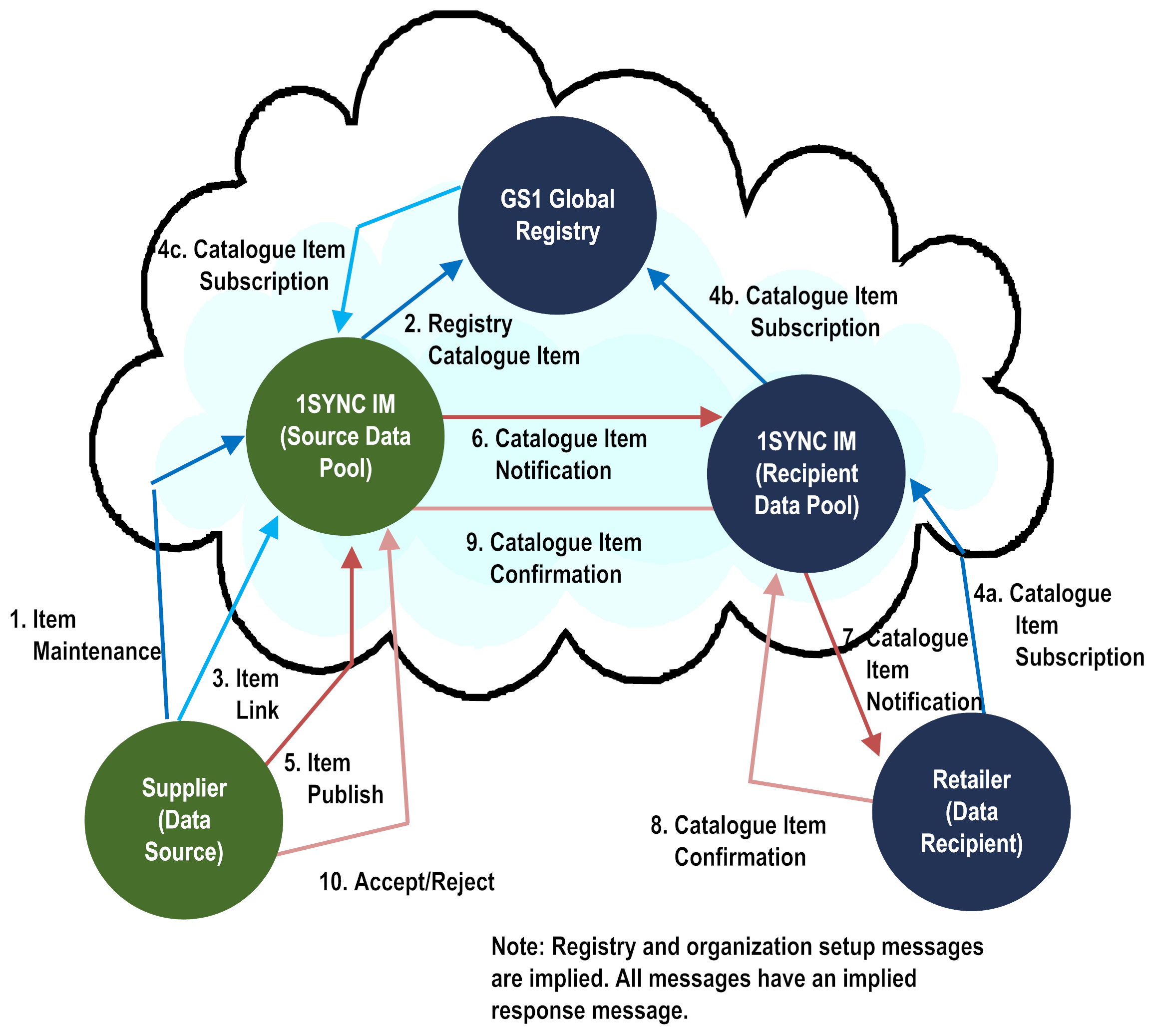The 1SYNC Item Synchronization Process
Item synchronization provides a standardized method for trading partners to publish, subscribe, and authorize item information, which reduces data discrepancies among trading partners. Trading partners using 1SYNC store their item information in the 1SYNC Data Pool. The data pool provides storage of item information and can be thought of as a large database containing all the information about various items from different trading partners. The seller describes the item in a standardized way (defined by various standards) and stores the information in the data pool. The retailer browses the database (data pool) and finds item information which he is interested in. After the item of interest is found, the trading partners can start another process (not a part of item synchronization) to do business.
1SYNC defines the item synchronization process and the standard XML exchanged between the supplier (the Data Source) and the retailer (the Data Recipient). A simplified version of the 1SYNC item synchronization process flow is shown below. For a complete view of the in-network process for 1SYNC IM, see the 1SYNC item management online user guide, available on the 1SYNC IM Solution Center.
The item synchronization process begins when suppliers register items with 1SYNC. Suppliers notify retailers of registered items by submitting Catalogue Item Notifications (CINs) to 1SYNC.
1SYNC pushes the CINs to the retailers, and the retailers use 1SYNC Module to receive the 1SYNC CINs. Retailers respond to each CIN by submitting a Catalogue Item Confirmation (CIC), which communicates the type of action taken for the notification. The item synchronization process ends when suppliers receive their CICs.

